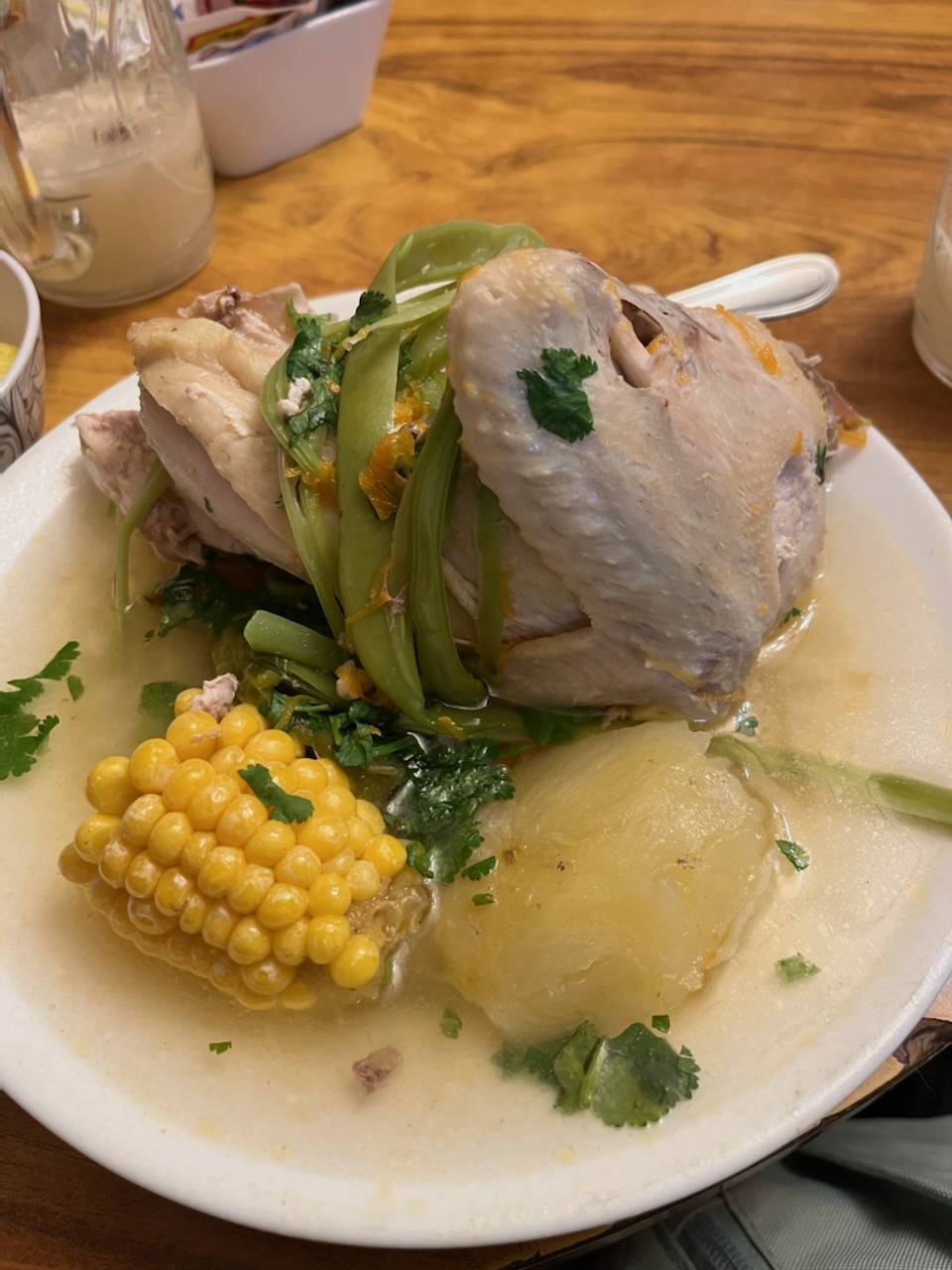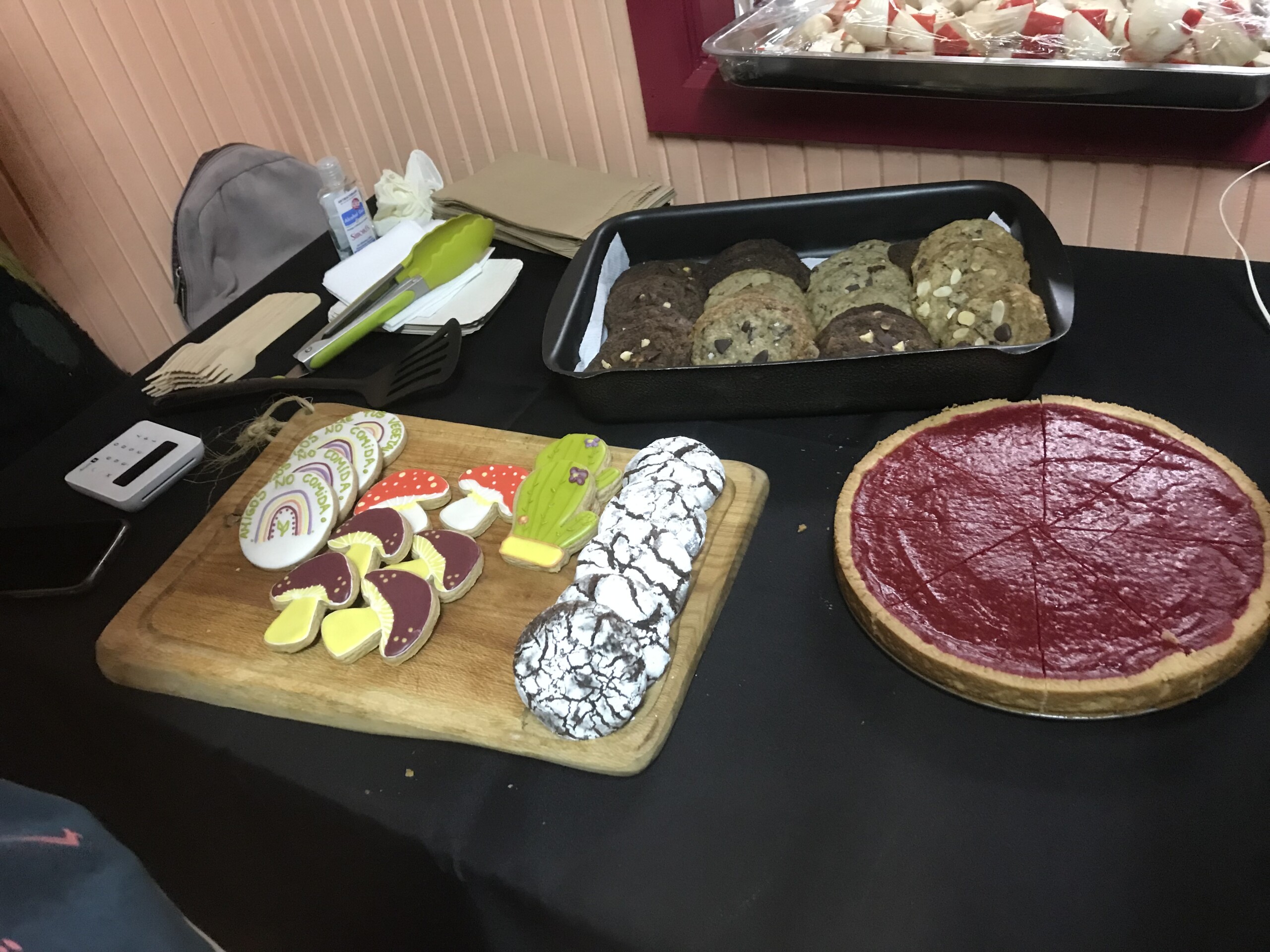Exploring the diverse culinary offerings of a region is one of the greatest pleasures of studying abroad. When you study abroad in South America, you’ll have the opportunity to enjoy seasonal and regional specialties. Whether indulging in street food, sitting down to a family table, or gathering around an open fire, you’ll discover unique flavors and textures you have never experienced before. Imagine all the fun you’ll have nibbling and crunching these remarkable regional delicacies.
Sopaipillas
The quintessential street food, these tasty fried pastries can be found everywhere, especially at markets, beaches, and bus stops. The dough is made of flour, native Chilean pumpkin, and sometimes cinnamon. Depending on what’s tucked inside, sopaipillas are generally enjoyed with either pebre (a sauce of onion, garlic, coriander, and chilis) or chancasa (a sauce made with orange peel, sugar, and cinnamon).
Grab a mote con huesillo (a drink of peach juice with wheat berries and preserved peaches) for a cold and refreshing summer drink alongside the sizzling hot sopaipilla, and you’ll be in heaven!
Cazuela

This is a traditional hearty soup or stew that is hearty and filling. It’s the simplicity of the dish that makes it spectacular. The ingredients are kept whole—the chicken is still on the bone, the corn is on the cob, etc. The savory broth is flavored with garlic, onion, paprika, and cumin, and the dish is often served with a side of rice and fresh hot bread. There are many regional variations of cazuela, including a seafood version! No matter what version you try, it’s comforting and nourishing—the perfect, stomach-warming meal after a hike in the icy mountains.
Barbecue
Also known as asado, the Argentine barbecue is a beloved cultural tradition and a centerpiece of Argentine cuisine. A traditional barbecue involves grilling various cuts of beef seasoned simply with salt and sometimes chimichurri (a flavorful sauce made of garlic, parsley, vinegar, and oil) over an open fire. Asado is often served with fresh, hot bread, more chimichurri sauce, and grilled vegetables like tomatoes, onions, and peppers.
Asado is not just a meal; it’s a social event that brings people together for hours of eating, drinking, and conversation. Barbecues are cultural experiences often held on weekends and holidays because the entire process can take many hours as the meat is slowly cooked over the fire.
Choripán

Another popular street food in Chile, choripán is a grilled chorizo sausage flavored with spices like paprika, cumin, and garlic, served on a crusty bread roll called a marraqueta. The typical choripán is grilled on a charcoal fire or grill until cooked thoroughly and a little charred. The bread is toasted n the same grill and sliced open to create a pocket for the sausage. Most choripáns are topped with condiments like chimichurri or pebre and served with a cold drink.
Contrary to popular belief, it’s actually easier than ever to be vegan in Chile. There are vegan food trucks and vegan food options everywhere, and you can often find traditional Chilean foods made vegan. This vegan choripán is served with pebre, which is similar to pico de gallo, and vegan mayo on top.
Empanadas

A savory type of pastry that can be served as a snack or a main dish, empanadas are famous throughout South America. In Argentina, they are often served as a starter dish, while in Chile, they are a portable lunch. The filling can be anything from savory meats and vegetables to a boiled egg or olives. The circular pastry is folded over the ingredients and crimped tightly, then baked or fried until crispy and light brown. Typically served with a dipping sauce such as aji sauce, salsa, or chimichurri, empanadas are versatile and delicious snack or meal. Try them everywhere you go because the variations reflect the unique and seasonal ingredients available locally.
Completos
South American completos are similar to the familiar American hot dog and are sold everywhere. Much like the regional differences in North American variations of hot dog toppings, completo toppings also vary depending on regional style. Completos are typically served with overwhelming toppings, starting with diced tomatoes, chopped onions, and sauerkraut. In Chili, it’s common to add avocado and aji sauce, a spicy sauce made of chili peppers. It’s also easy to find veganized versions of this Chilean food staple.
Tortilla de Espinacas
The tortilla de espinacas, sometimes called tortilla de acelga, is a savory dish similar to a frittata. It’s typically made with lots of local spinach or swiss chard, cheese, eggs, and onions. Much like a typical omelet, the vegetables are cooked until tender and added to beaten eggs and cheese. Everything is poured into a hot skillet and cooked until set, then flipped and cooked until the other side is golden.
The homemade spinach and egg pancakes in Villaricca were spectacular with a side of celery and bread. Add a little Chilean aji hot sauce, and it’s the real deal!
Pastel de Choclo
Pastel de choclo is a savory, creamy corn pie filled with beef seasoned in cumin, paprika, garlic, and onions. It’s a traditional Chilean dish similar to shepherd’s pie. The seasoned beef filling is topped with a layer of pureed corn sweetened with honey and baked until golden. It’s one of those warm, hearty comfort foods that are popular at family gatherings on cold days.
Tasty Desserts and Vegan Pastries
I have found the most stunning vegan bakeries here! This is Sinfonía Panadería y Pastelería un Barrio Italia. Many of their pastries are also gluten-free. In addition to veganized versions of classic pastries, they bake delicious fresh bread every day.
Cookies and a raspberry tart from a vegan fair in Valdivia on the weekend of the Chilean Independence Day (September 18th). Vegan fairs popped up all over Chile this weekend!
Tasty deserts in Santiago, Chile! The Alice in Wonderland Themed Milkshakes contained a rich blend of chocolate and cream, delighting the taste buds. To top it off, brownies and chocolate cake slices were placed atop the shakes for an extra sensation!
If you studied abroad in South America and notice your local favorite food or flavor is missing from this list, submit a photo and description to be included in this post.












Leave A Comment